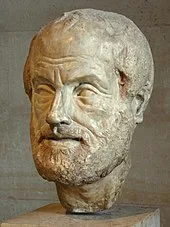One of the unintended, at least from a human point of view, consequences of accepting a Big Bang/Evolution Creation account is that reinterpretation doesn’t merely stop in Genesis 2. This “Evolutionary Creep” extends itself into the account of Noah’s flood with the adoption of a so-called “local flood theory.” Once it sweeps through Noah, all Scripture becomes fair game. Because of the damage that is ultimately done to Scriptural inerrancy, it is worth examining this issue in some detail.
Why the Flood Matters
It might not be immediately obvious why a reinterpretation is necessary, but it was clear to Charles Darwin and his friend Charles Lyell. In his Principles of Geology (1833), Lyell came up with the theory of uniformitarianism which posits that the same physical laws and processes that are observed today were operable in the past and will continue to be so in the future. Because the processes are uniform, the dating of fossils and the rock formations in which they are found would also follow a uniform distribution making it easy to date them based on their placement. This theory is opposed to catastrophism which states that fossils and the sedimentary rock formations they are found in are laid down at irregular time intervals due to the irregular occurrences of catastrophes such as volcanoes and floods. If catastrophes, especially one of the magnitude of the Flood, are primarily responsible for the geologic column, then the age of the earth would be orders of magnitude younger than it would be under uniformitarianism. In other words, in order for Lyell and Darwin’s theory to work, the Flood as a world-wide catastrophe would need to be reinterpreted to just a local event. And for the most part, Lyell was successful prompting Darwin to contend that “Lyell is most firmly convinced that he has shaken the faith in the Deluge far more efficiently by never having said a word against the Bible than if the had acted otherwise.”
Those who are well versed in Scripture will recognize that St. Peter prophesied against those “scoffers” who rejected the literal historical truth of the Flood and promoted uniformitarianism: “First of all you must understand this, that scoffers will come in the last days with scoffing, following their own passions and saying, ‘Where is the promise of his coming? For ever since the fathers fell asleep, all things have continued as they were from the beginning of creation.’ They deliberately ignore this fact, that by the word of God heavens existed long ago, and an earth formed out of water and by means of water, through which the world that then existed was deluged with water and perished” (2 Peter 3:3-6).
Given such a clear warning, this ought to give pause to any Catholic who entertains or even defends the Local Flood Theory. Instead, we must defend ourselves against the scoffers by defending the traditional interpretation that the Flood was a world-wide event.
What the Fathers and Scripture Say
First, it is clear that the Church Fathers unanimously interpreted the Flood as covering the whole earth. This includes Justin Martyr, Theophilus of Antioch (who wrote against Plato’s belief that it was a local flood), Gregory Nazianzus, John Chrysostom, and Augustine. As Vatican I taught by infallible decree, “It is not permissible for anyone to interpret holy scripture in a sense contrary to this, or indeed against the unanimous consent of the fathers.” Catholics are not free to interpret Genesis 6-8 as a local flood.

In addition to the unanimity of the Fathers, there is the fact that we are commanded “not to depart from the literal and obvious sense [of Scripture], except only where reason makes it untenable or necessity requires” (Providentissimus Deus 15). To twist the straightforward language such as God’s promise that “every living thing that I have made I will blot out from the face of the ground” (Gn 7:7) and “The waters prevailed and increased greatly upon the earth; and the ark floated on the face of the waters. And the waters prevailed so mightily upon the earth that all the high mountains under the whole heaven were covered; the waters prevailed above the mountains, covering them fifteen cubits deep. And all flesh died that moved upon the earth, birds, cattle, beasts, all swarming creatures that swarm upon the earth, and every man; everything on the dry land in whose nostrils was the breath of life died. He blotted out every living thing that was upon the face of the ground, man and animals and creeping things and birds of the air; they were blotted out from the earth. Only Noah was left, and those that were with him in the ark” (Gn 7:18-23) requires some serious interpretive gymnastics to get away from the literal historical truth of the account of the Flood.
There is a further difficulty in that God, in making a covenant with Noah promises that He will “establish My covenant with you, that never again shall all flesh be cut off by the waters of a flood, and never again shall there be a flood to destroy the earth”(Gn 9:11). If He did not actually flood the entire earth, then the covenant is nonsense. If it was a local flood only, then God has broken His promise with regularity.
It is also true that the Flood is a type of the Last Judgement. Both are universal in scope. Returning to St. Peter who prophesies that “the world that then existed was deluged with water and perished. But by the same word the heavens and earth that now exist have been stored up for fire, being kept until the day of judgment and destruction of ungodly men.” (2 Peter 3:6-7). Just as the world was destroyed by water, it will likewise be destroyed by fire at the end of time. It is also the testimony of Our Lord testified that the world-wide flood is a type of His Second Coming (Mt 24:36-42).
In conclusion it is worth noting again that St. Peter warned us that such a rejection of the Flood was coming, but so many Catholics have capitulated. We must, for the sake of faith in the Sacred Scriptures put a stop to the Evolutionary Creep.






